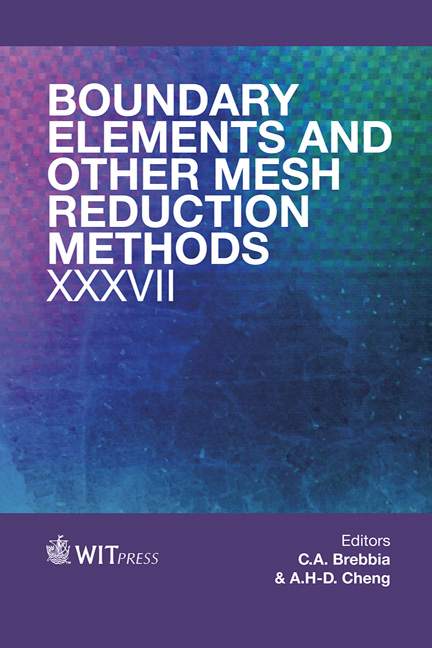Collocation And Optimization Initialization
Price
Free (open access)
Transaction
Volume
57
Pages
7
Page Range
55 - 61
Published
2014
Size
208 kb
Paper DOI
10.2495/BE370051
Copyright
WIT Press
Author(s)
E. J. Kansa, L. Ling
Abstract
Integrated volumetric methods such as finite elements and their “meshless” variations are typically smoother than the strong form finite difference and radial basis function collocation methods. Numerical methods decrease their convergence rates with successively higher orders of differentiation along with improved conditioning. In contrast, increasing order of integration increases the convergence rate at the expense of poorer conditioning. In the study presented, a two-dimensional Poisson equation with exponential dependency is solved. The solution of the point collocation problem becomes the initial estimate for an integrated volumetric minimization process. Global, rather than local integration, is used since there is no need to construct any meshes for integration as done in the “meshless” finite element analogs. The root mean square (RMS) errors are compared. By pushing the shape parameter to very large values, using extended precision, the RMS errors show that spatial refinement benefits are relatively small compared to pushing shape parameters to increasing larger values. The improved Greedy Algorithm was used to optimize the set of data and evaluation centers for various shape parameters. Finally, extended arithmetic precision is used to push the range of the shape parameters.
Keywords
meshless radial basis functions, multiquadric, strong and weak formulation, partial differential equations, global minimization.





